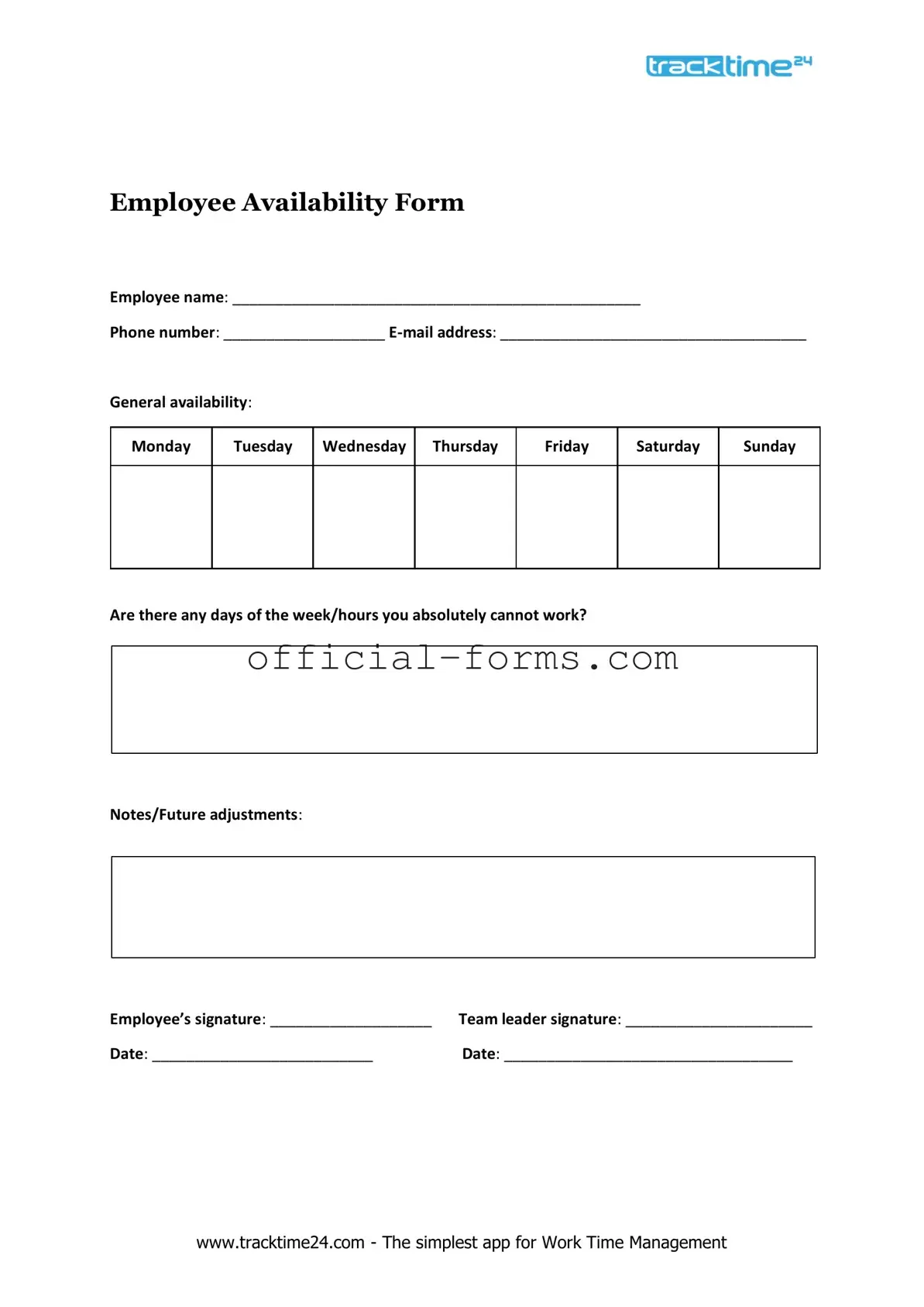Understanding the nuances of employee scheduling is crucial for any organization aiming to optimize productivity and maintain employee satisfaction. One essential tool in this process is the Employee Availability form, which serves as a pivotal resource for both employers and employees. This form allows employees to communicate their preferred working hours, days off, and any scheduling constraints they may have, thereby fostering a more harmonious workplace environment. By collecting this information, employers can create schedules that respect individual needs while still meeting the operational demands of the business. Moreover, the form often includes sections for employees to indicate their availability for overtime or special shifts, which can be particularly useful during peak periods. Overall, the Employee Availability form not only streamlines the scheduling process but also enhances employee engagement by acknowledging their personal commitments and preferences.
